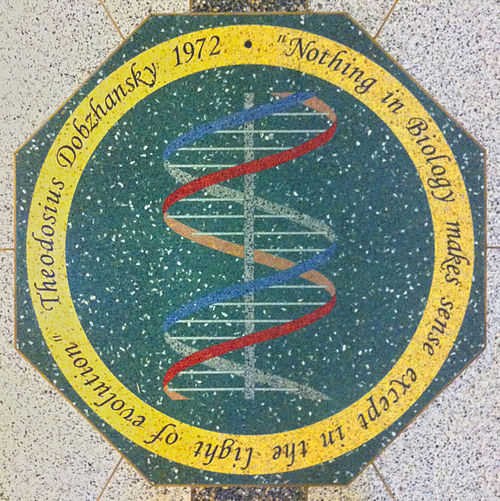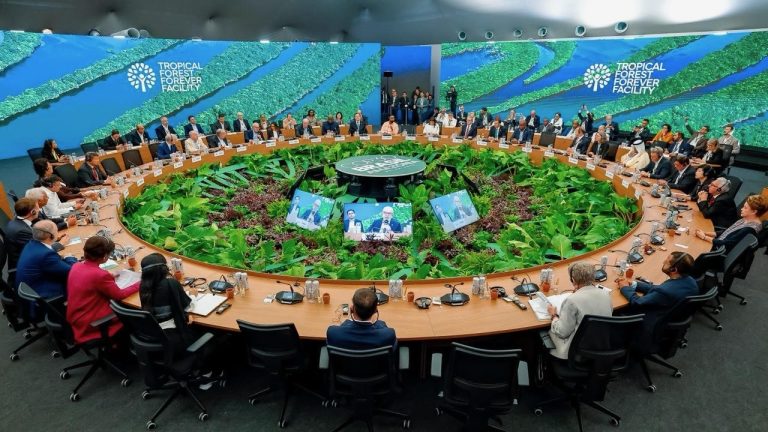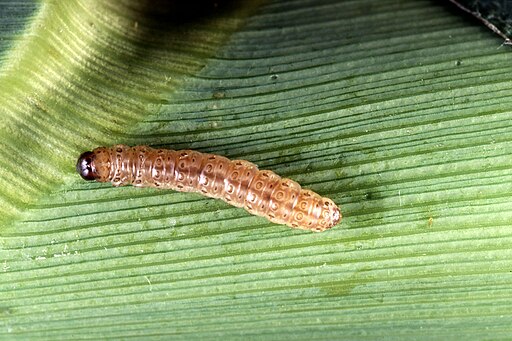Industrial agriculture kills biodiversity
The collapse of biodiversity (both wild and cultivated) is essentially due to human activities. Among these, industrial agriculture, with its range of fertilisers, pesticides and other harmful practices, plays a key role.
The collapse of biodiversity was once again highlighted at the Conference of the Parties (COP 15) at the Convention on Biological Diversity (CBD) in Montreal in December 2022 [1] : the sixth mass extinction is underway [2], with one million living animal and plant species threatened (out of eight million – 75% of which are insects [3] [4]. Some categories are more affected than others (40% of amphibian species could disappear over the course of the century), but overall, the destruction of ecosystems by humans has been increasing over the last two centuries : down at least 40% for terrestrial species, 84% for freshwater species and 35% for marine species, not counting bacteria, which are essential to all life in the soil.
Another meaningful figure : 10,000 years ago, the biomass of terrestrial vertebrates consisted of 99% wild animals. Today, it is essentially made up of domestic animals (67%) and humans (32%) (see diagram).

Drawing based on article by Smil, V. (2011), « Harvesting the Biosphere : The Human Impact », Population and Development Review, 37 : 613-636.
To eat, dress themselves, shelter, heat – in short, to live – humans have domesticated and exploited biodiversity. But in a few thousand years, this use has gone from simply taking things from the natural environment (hunting, small-scale fishing, gathering) to over-exploitation over the last century or so (industrial agriculture and fishing, cutting down entire forests, artificialising the soil, etc.), leading to extinction. This over-exploitation is itself due to exponential demographic growth and an ever-increasing desire for comfort.
Destruction on all levels
Biodiversity is declining at every level of the planet, in the soil, on land and in the sea. Soil accounts for more than a quarter of the planet’s biodiversity. According to the IPBES, the primary cause of soil destruction is changes in land use, particularly as a result of urbanisation. For example, in mainland France, 60,000 hectares of agricultural, forest or natural land are artificialised every year, equivalent to the average surface area of one “département” every 10 years [5].
But these agricultural soils are themselves already heavily degraded by industrial agriculture, an agriculture that requires very high levels of capital investment (agricultural equipment, robotics, etc.) and fossil energy (in particular to get this equipment work, but also to produce fertilisers and pesticides, etc.). The aim is to obtain maximum yields in the short term : to produce more with less land, fewer farmers… but therefore more capital. Let’s look at a few examples of why this type of agriculture is destroying biodiversity.
The development of agriculture involves a certain degree of soil artificialisation. The trend in industrial agriculture is to produce as much food as possible with as few peasants as possible (who have become known in everyday language as “farm operators”) [6]. For example, between 1970 and 2020, France lost 1,200,000 farms (400,000 remained in 2020), from an average surface area of 20 hectares to 69 hectares [7].
This “feat” was only made possible by, among other things, capital intensification, which is still ongoing (more mechanisation, more inputs, etc.) [8], the homogenisation of crops and the specialisation of livestock farming [9]. The same trend can be seen worldwide, although there are of course major disparities : farms of several thousand hectares in Argentina, Brazil or the United States have nothing in common with subsistence farms, particularly in the countries of the South. Of the 608 million farms in the world, 84% are smaller than 2 hectares, while 1% of farms cultivate 70% of the world’s agricultural land (“Which farms feed the world and has farmland become more concentrated ?”, World development Vol. 142, June 2021).
In these conditions of gigantism and the race for yields, agricultural soils, which are expanding at the expense of natural areas and represent more than a third of the world’s land [10], are being degraded, both by cultivation practices (use of farm machinery, etc.) and by the pesticides and fertilisers spread. The result is soil destruction and erosion, sometimes salinisation (nearly 9% of the world’s soils are affected by salinisation [11], as well as pollution that kills soil life. Without this life (bacteria, micro-organisms, etc.), the organic matter can no longer be transformed and fertility declines : for example, the level of organic carbon in the upper layers of the soil after 30 to 70 years of cultivation has fallen by 25% to 50% in temperate countries, which is a major cause of the greenhouse effect (which itself reduces the diversity of living organisms).
Less and less diverse crops and livestock
In addition to wild biodiversity, cultivated plants and farm animals are also suffering from genetic erosion on two levels. Firstly, the number of cultivated species is declining : out of 6,000 food plant species, fewer than 200 make a significant contribution to global food production, and just nine of these account for 66% of total agricultural production [12]
Global livestock production is based on around 40 animal species, of which only a few provide the vast majority of meat, milk and eggs. And 26% of the world’s livestock breeds are threatened with extinction.
Secondly, intra-varietal genetic diversity is itself decreasing, which means that two individuals of the same variety are genetically very close, almost like clones [13]. This is due to the legal requirement in many countries that individuals of the same variety must reproduce identically in order to be marketed (and protected by intellectual property rights in the process [14]). This genetic homogenisation of individuals of a variety leads to adaptive fragility, both to biotic stresses (caused by living organisms) and climatic stresses, hence the vicious circle of pesticide use… and the continuing destruction of biodiversity !
In the official discourse, it is to break this vicious circle that researchers – and agro-seed and agrochemical companies – have genetically modified crops (and are beginning to do so for animals). The basic idea was to create plants that would protect themselves from all external aggressions, thanks to resistance genes, so as to be free from pesticides. With certain new modified varieties, some agri-seed companies are claiming an increase in biodiversity !
In practice, this is far from being the case : the GMO varieties created are mainly herbicide-tolerant, so that they can be spread without destroying the crop ; and they produce toxins to kill aggressors, such as Bt maize against the European corn borer. What’s more, they are patented, further privatising living things. We could do without such an “increase” in biodiversity !
Wildlife also affected
A recent collective scientific assessment by INRAE (published in March 2023) on the impact of pesticides on biodiversity showed the extent of contamination in “all types of terrestrial and aquatic environments, all the compartments of which they are composed and most of the organisms found there“ [15]. Among other things, this leads to a decline in populations of terrestrial and aquatic invertebrates and birds.
One of the increasingly visible consequences is the decline in pollination by insects (bees, bumblebees, ants, butterflies or flies, etc.), leading to production losses. According to the IPBES, around 70-75% of cultivated plants (mainly fruit trees, vegetables, oilseeds and protein crops) depend on entomophilic pollination (by insects), representing 35% of the tonnage of the world’s agricultural production [16] Not to mention the fact that some plant species are strictly pollinated by a given insect species.
Capitalism : the enemy of biodiversity !
What is the common factor behind all this destruction and the failure to implement solutions ? Our arrogance in our desire to dominate nature, our feeling of being superior to it rather than a stakeholder. But also, and above all, the pursuit of short-term profit, defended by corporate lobbies, unfortunately often relayed by politicians.
There are many examples of this in industrial agriculture, fishing and forestry. For example, the European Union has banned the use of neonicotinoids, bee-killing pesticides. Yet for several years, France authorised their use on certain crops (including beetroot, see p.10-11) [17]. Also in France, the Agence nationale de sécurité sanitaire (Anses) announced in February 2023 that it wanted to ban the herbicide S-metolachlor, whose residues are present in groundwater at levels well above European standards. However, the French Minister for of Agriculture, Marc Fesneau, asked the ANSES, at the congress of the majority farmers’union (FNSEA), to reconsider its position [18] [19] ! The same FNSEA is blocking any prospect of solutions to reduce nitrate levels in water [20], despite a “reasoned opinion” from the European Commission to France in February 2023 [21].
Other examples : almost a third of fish stocks are overexploited and more than half have reached their endurance limit [22] The European Union proposes to ban deep-water trawling by 2030. The Secretary of State for the Sea, Hervé Berville, responded in March 2023 : “I say very clearly that France – the government – is totally opposed to implementing a ban on bottom trawling in marine protected areas. Totally, clearly and firmly“ [23]. Finally, in terms of forestry, France wants to “build two biomass power stations by 2024-2025 to supply energy to the European Space Agency […] on the north coast of French Guiana“ [24], to produce 120,000 tonnes of biomass (5,300 hectares of forest would be destroyed), and this despite the stated need to protect tropical forests, reiterated by French President E. Macron at the One forest Summit in March 2023 [25] !
The picture of the damaging effects of industrial agriculture on biodiversity is bleak. Industrial agriculture kills life, including farmers, who are poisoned by pesticides or commit suicide. The real economic losses associated with the collapse of biodiversity are often highlighted. But some of the ’green’ solutions suggested by multinationals are often used as an alibi for the same companies to continue exploiting the planet and reaping huge profits. This leaves behind the poorest populations, which, as the IPBES has shown, are those most dependent on biodiversity for their survival [26]. In agriculture, the only sustainable solutions are those that promote farmers’ autonomy, thanks to agroecology and farmers’ seeds [27] [28].








